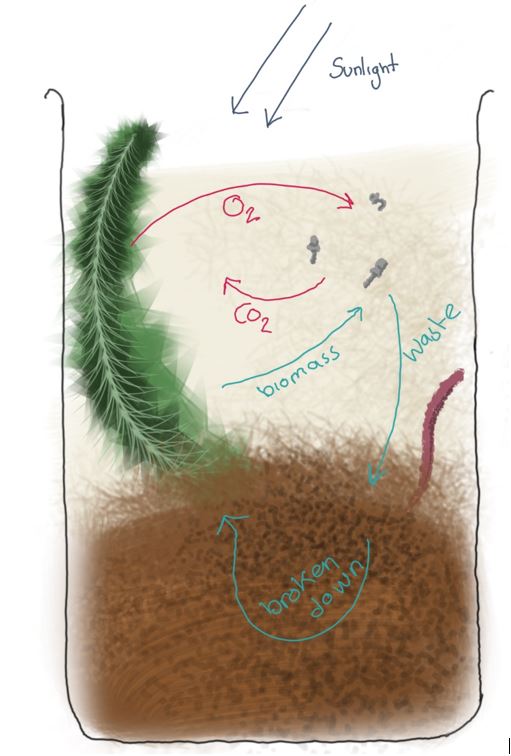Ecosystem in a jar - activity
Video for Ecosystem Jar activity
The Science
An Ecosystem describes how all the living (plants, animals, fungi etc.) and non-living (water, weather, terrain etc.) components of a place come together. Everything in an ecosystem is somehow linked to everything else in the ecosystem and disruption to the fine balance of an ecosystem can sometimes lead to it collapsing. In this experiment we’ll create our own mini-ecosystem and hopefully get to see some of the connections between plants, animals, water and soil in real life!
Safety instructions
This activity takes place near outdoor water and must be carried out under the supervision of an adult.
Time
30 minutes + a week or so to wait
Materials
A big jar with a lid (at least 1 litre)
Access to a nearby natural pond (preferably one with lots of greenery)
Instructions
Getting Ready
Rinse out your jar! We want to make sure there’s no debris/ waste in the jar (including leftover chemicals from when it was made). Give it a good rinse and make sure there’s nothing still in there
Watch instruction video for additional detail on the below instructions
Creating your Ecosystem!
- Get to the pond
- Find an area with low banks so you can access the water easily without falling in. It’s best to find somewhere with lots of cover and plant life
- Disturb the bottom sediment (matter at bottom of pond) with the jar and try to fill the jar up to about a third with sediment
- Fill the rest of the jar with pond water (leaving some space at the top)
- Add in some living plants and greenery
- Water snails make great additions – see if you can find some!
- Put the lid on and leave your ecosystem somewhere sunny
- Wait a couple of days for the sediment to settle
- Look and see what you’ve found!
Tips and extras
Oxygenation: It may not be possible to find oxygen producing plants at your pond, but pond weed is great and can be purchased for ~£3-5 online or at aquarium shops. Hornwort/ fanwort are other good alternatives
Animals: big insects, fish and amphibians won’t survive in an ecosystem like this, because they need too much food and produce too much waste. Small aquarium snails/ sea monkeys/ brine shrimp/ small shrimps however will do great! You may be able to find some while creating your ecosystem but if not, these are also available easily online. Be careful not to overload your ecosystem! You’ll only want a couple of organisms, or they may eat all your plants too quickly.
Sunlight: plants need sunlight, and so does your ecosystem!
Things to think about
The ecosystem we’ve created can sustain itself because of the balance between the organisms. Sunlight allows the plants to grow and create oxygen and absorb nitrogen and carbon dioxide. Animals in the water eat the plants, control algae, use the oxygen and produce nitrogen and carbon dioxide. Microorganisms in the soil balance the soil nutrients and breakdown waste material making nitrogen available for plants.
Figure 1: Ecosystem Jar The ecosystem you create will be self-sustaining because of the balance between the organisms.



